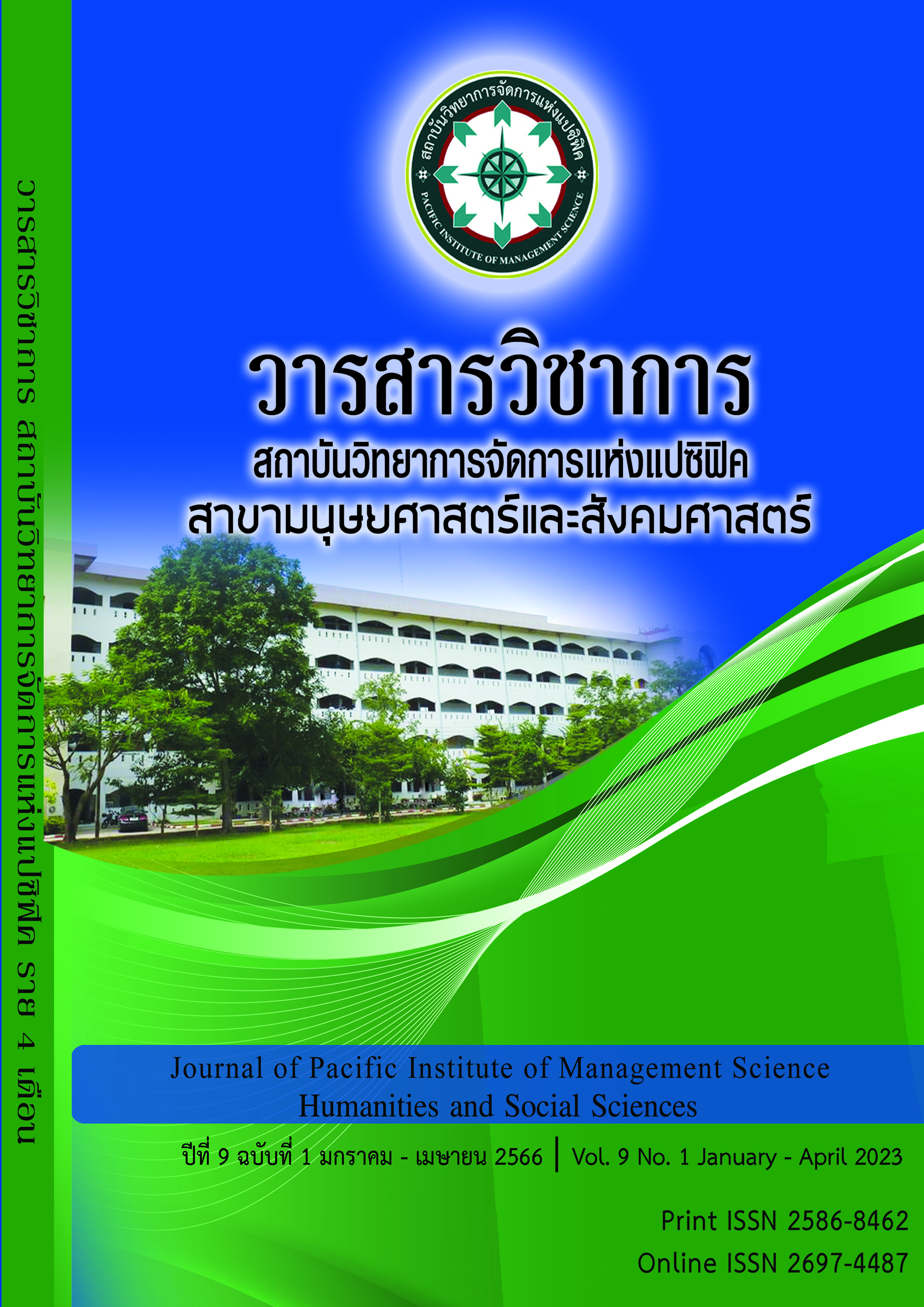The development of electronic commerce system to a new way of life of OTOP products in Uttaradit and Phrae provinces.
Keywords:
e-commerce, marketing mix factors, OTOPAbstract
The purpose of this research was observe into consumers internet usage behavior when it came to purchasing goods and services through an e-commerce system. A study and analysis of the factors influencing consumers decisions to purchase OTOP products via the e-commerce system in Uttaradit and Phrae Province. The target group population is Consumers who buy OTOP products in 10 product groups and 380 people. Statistics are used for data analysis. Factors in the marketing mix by using exploratory factor analysis to examine the elements that affect a consumer's choice to purchase OTOP goods. By analyzing binary logistic regression. The majority of them, according to the study, were female (67.89%), between the ages of 20 and 30 (50.53%), single (76.58%), in school or in college (54.21%), holding a bachelor's degree (60.53%), and making less than 15,000 Baht per month (68.95%). user behavior on websites They were found to regularly use the internet (91.32%) on their mobile devices or tablets (58.16%), and 10.26% of them used it to buy or sell things online. The average cost is less than 1,000 baht (64.21%), bank transfer or ATM payment (69.21%), and monthly internet purchases (34.21%) are made for convenience (40.79%). Age, occupation, marketing mix factors in terms of promotion, and privacy are factors influencing the decision to buy OTOP products. The grouping of marketing mix factors can be classified into 6 groups (6Ps). it was statistically significant at 0.05. because of it was the foundation for the creation of e-commerce websites and OTOP products in the Uttaradit and Phrae Province. To expand the website in order to develop the OTOP product e-commerce system (https://www.otopuru.com). SDLC, the PHP programming language, MYSQL, and CMS databases, as well as WordPress scripts and the Woo commerce plugin, are all used in website development.
References
กัลยา วานิชย์บัญชา. (2549). การใช้ SPSS for Windows ในการวิเคราะห์ข้อมูล. พิมพ์ครั้งที่ 6. กรุงเทพฯ: จุฬาลงกรณ์มหาวิทยาลัย.
กศิพัฎญ์ ทองแกม. (2562). ปัญหาและแนวทางส่งเสริมการขายสินค้าโอทอปบนตลาดออนไลน์เชิงพุทธในจังหวัดอุดรธานี. มหาจุฬานาครทรรศน์ 6 (9) : 4627-4644.
กลุ่มงานยุทธศาสตร์และข้อมูลเพื่อการพัฒนาจังหวัด. (2561). วิสัยทัศน์และยุทธศาสตร์การพัฒนาจังหวัดอุตรดิตถ์ 2561. อุตรดิตถ์: สำนักงานจังหวัดอุตรดิตถ์.
ฉัตยาพร เสมอใจ. (2550). การบริหารการตลาด. กรุงเทพฯ: ซีเอ็ดยูเคชั่น.
ศิริวรรณ เสรีรัตน์ และคณะ. (2541). กลยุทธ์การตลาดและการบริหารการตลาด. กรุงเทพฯ: พัฒนศึกษา.
บุญยิ่ง คงอาชาภัทร. (2562). 'ซีเอ็มเอ็มยู' ชำแหละจุดอ่อนสินค้าโอทอปไทย ต้องเข้าใจมุมมองผู้บริโภค. [ออนไลน์]. สืบค้นเมื่อ 20 พฤศจิกายน 2563. จาก https://www.posttoday.com/economy/sme/ 599771.
บุษยา วงษ์ชวลิตกุล. (2560). พฤติกรรมการซื้อและการวิเคราะห์องค์ประกอบปัจจัยที่มีผลต่อการซื้อสินค้าหรือบริการผ่านระบบพาณิชย์อิเล็กทรอนิกส์ของผู้บริโภคในเขตเทศบาลนครนครราชสีมา จังหวัดนครราชสีมา. วิชาการบริหารธุรกิจ สมาคมสถาบันอุดมศึกษาเอกชนแห่งประเทศไทย 6 (1) : 95-113.
สำนักงานสถิติแห่งชาติ กระทรวงดิจิทัลเพื่อเศรษฐกิจและสังคม. (2565). การสำรวจการมีการใช้เทคโนโลยีสารสนเทศและการสื่อสารในครัวเรือน. กรุงเทพฯ: กองสถิติเศรษฐกิจ.
สำนักงานเลขานุการของคณะกรรมการยุทธศาสตร์ชาติ สำนักงานคณะกรรมการพัฒนาการเศรษฐกิจและสังคมแห่งชาติ. (2561). ยุทธศาสตร์ชาติ พ.ศ. 2561-2580. กรุงเทพ: สำนักงานเลขานุการของคณะกรรมการยุทธศาสตร์ชาติ.
สำนักส่งเสริมภูมิปัญญาท้องถิ่นและวิสาหกิจชุมชน. (2562). แผนปฏิบัติการขับเคลื่อนโครงการหนึ่งตำบล หนึ่งผลิตภัณฑ์ ปี 2562 – 2565. กรุงเทพฯ: ฝ่ายเลขานุการคณะกรรมการอำนวยการหนึ่งตำบล หนึ่งผลิตภัณฑ์ แห่งชาติ.
โอภาส เอี่ยมสิริวงศ์. (2554). การวิเคราะห์และออกแบบระบบ. กรุงเทพฯ: ซีเอ็ดยูเคชัน.
แอนนา พายุพัด. (2555). การวิเคราะห์และออกแบบระบบเว็บไซต์พาณิชย์อิเล็กทรอนิกส์สำหรับธุรกิจ OTOP 3-5 ดาว. มหาวิทยาลัยราชภัฏธนบุรี 10 (1) : 57.
Kotler, P. and Armstrong, G. (2010). Principle of marketing. 13th ed. New Jersey: Pearson Prentice Hall.
Downloads
Published
Issue
Section
License
Copyright (c) 2023 Pacific Institute of Management Science

This work is licensed under a Creative Commons Attribution-NonCommercial-NoDerivatives 4.0 International License.
บทความที่ได้รับการตีพิมพ์เป็นลิขสิทธิ์ของ สถาบันวิทยาการจัดการแห่งแปซิฟิค
ข้อความที่ปรากฏในบทความแต่ละเรื่องในวารสารวิชาการเล่มนี้เป็นความคิดเห็นส่วนตัวของผู้เขียนแต่ละท่านไม่เกี่ยวข้องกับสถาบันวิทยาการจัดการแห่งแปซิฟิค และคณาจารย์ท่านอื่นๆในสถาบันฯ แต่อย่างใด ความรับผิดชอบองค์ประกอบทั้งหมดของบทความแต่ละเรื่องเป็นของผู้เขียนแต่ละท่าน หากมีความผิดพลาดใดๆ ผู้เขียนแต่ละท่านจะรับผิดชอบบทความของตนเองแต่ผู้เดียว







